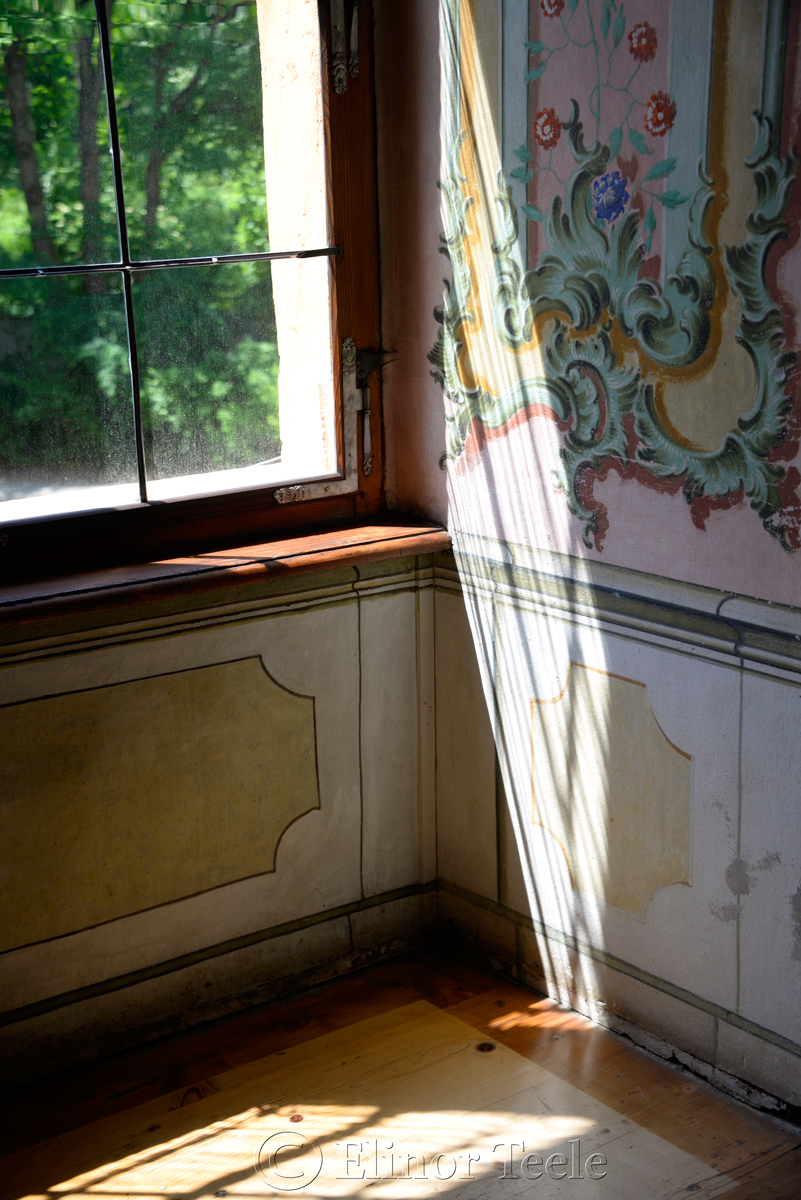When it came to impressing their guests, the Eggenbergs preferred the sledgehammer to the feather. You can see this principle in action during a guided tour of the palace’s 24 state rooms.
Baroque State Rooms
Like everything in the palace, the state rooms are part of an intricate cosmological scheme. 12 rooms were originally reserved for the Prince and 12 for the Princess.
Although Hans Ulrich von Eggenberg was responsible for the construction of the modern palace, it was his grandson, Johann Seyfried von Eggenberg, who financed the decorating.
Each room is adorned with landscape friezes and elaborate ceiling paintings (500+ in total) covering the Western history of the world. A Roman hurling himself into a poisonous crevice, a Theban woman shoving a soldier down a well, an Israelite heroine stabbing a Canaanite commander with a tent peg – it’s all fun and games in this Baroque version of antiquity.
As well as historical scenes, the Eggenberg cycle contains a series of puzzle emblems. Like Polonius’s blithering to Hamlet, the pictura (“image”) plus the lemma (“motto) add up to sententious advice for young rulers. For example, the picture of a cracked bell with the motto, Ex pulsu noscitur (“It is known by its sound.”) is meant to warn princes to consider their words carefully.
Rococo Makeover
The state rooms were made over in the mid-18th century on the orders of Johann Leopold Count Herberstein and his wife, Maria Eleonora, the last Eggenberg princess. The couple didn’t touch the ceilings, but they did ask the artist Johann Anton Baptist Raunacher to go all Rococo on the walls of the Semi-State Apartments in the north wing.
Since these rooms didn’t receive much sun, Raunacher kept everything deliberately airy and light – all the better for candlelit evening parties. In the new decorative scheme, ladies dance and shepherds frolic while blood continues to drip (metaphorically) from above.
Art Bonus: Keep an eye out for the couple cheating at cards in the game of Pharaoh.
Planetary Room
The state room cycle ends and begins in the Planetary Room, where the paintings evoke a Golden Age of Eggenberg power.
Created by Hands Adam Weissenkircher, the paintings depict the 12 signs of the zodiac (12 months) and 7 classical planets (7 days of the week & 7 alchemical metals). The planets also represent the 7 coats of arms of the Eggenberg family and 7 of its most prestigious members:
- Jupiter = King of the Gods = Johann Seyfried von Eggenberg
- Venus = Goddess of Love = Eleonora Rosalia, wife of Johann Seyfried
- Mercury = Messenger God = Prince Johann Anton, Imperial Ambassador to Rome
- Apollo = Sun God = Johann Anton II, younger son of Johann Seyfried
I can only imagine what Johann Anton II’s feelings were when his parents told him he was going to be represented as the half-naked “epitome of perfection.” Who knows? Maybe he enjoyed the experience.
Visiting Tips
The State Rooms can only be visited as part of a guided tour. These take place at 10 a.m., 11 a.m., 12 p.m., 2 p.m., 3 p.m. & 4 p.m., Tuesday – Sunday from April to October, and on public holidays. You can also try to book a popular candlelit tour.

